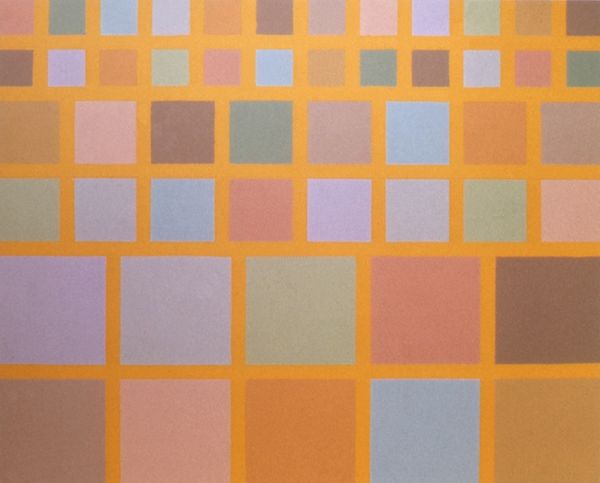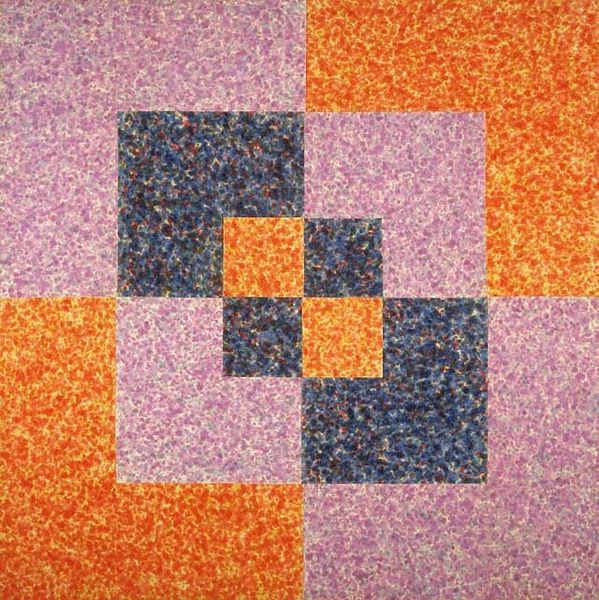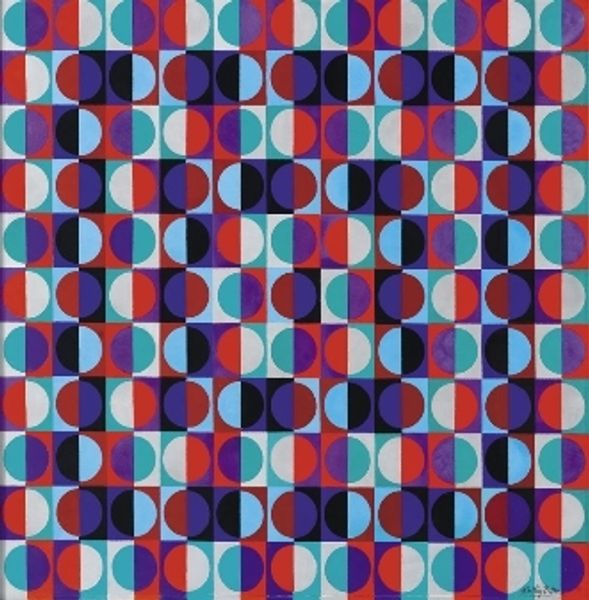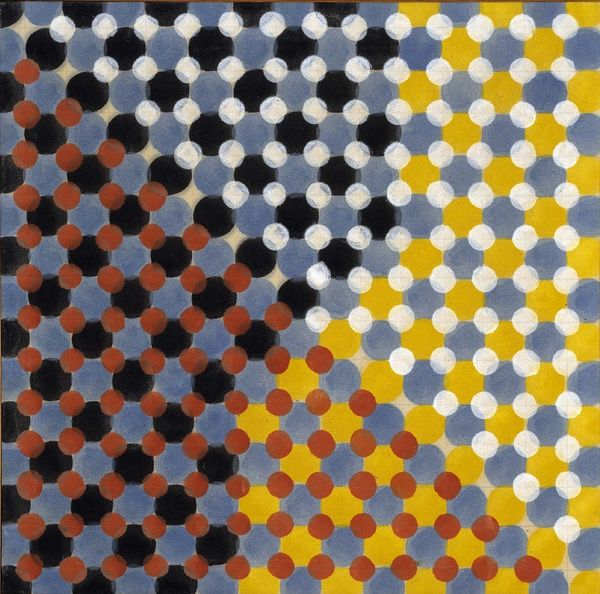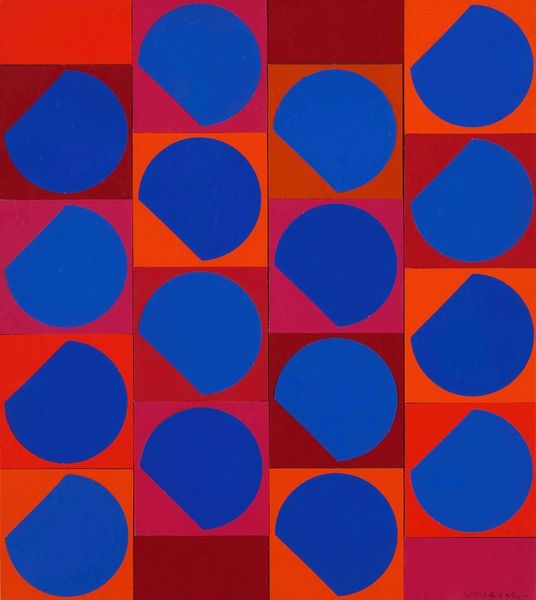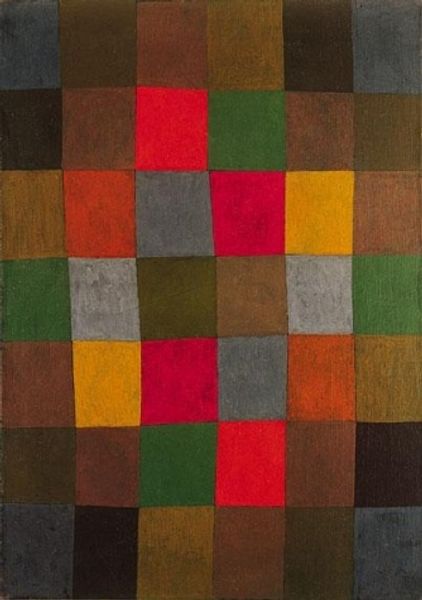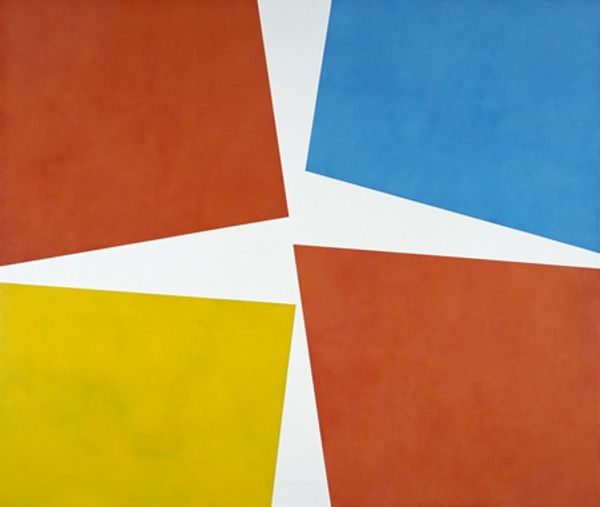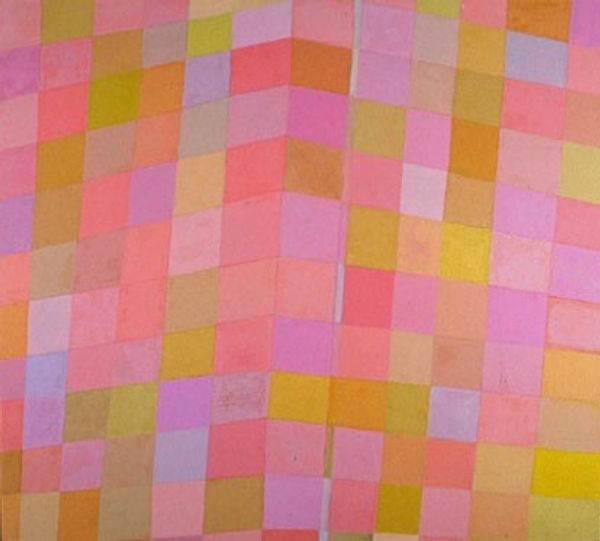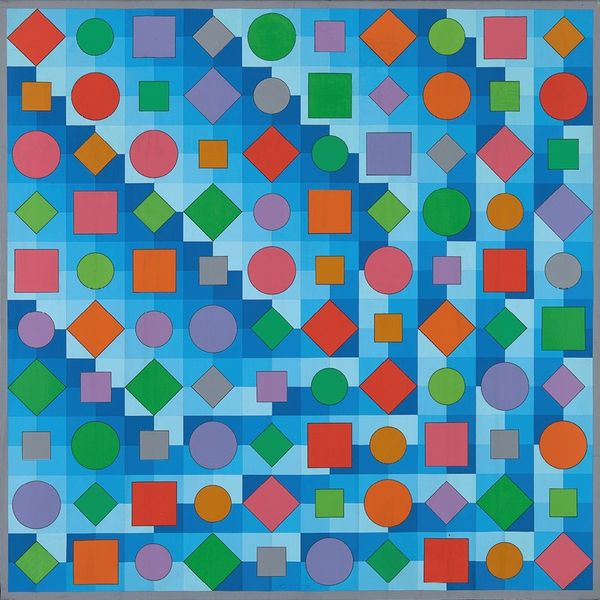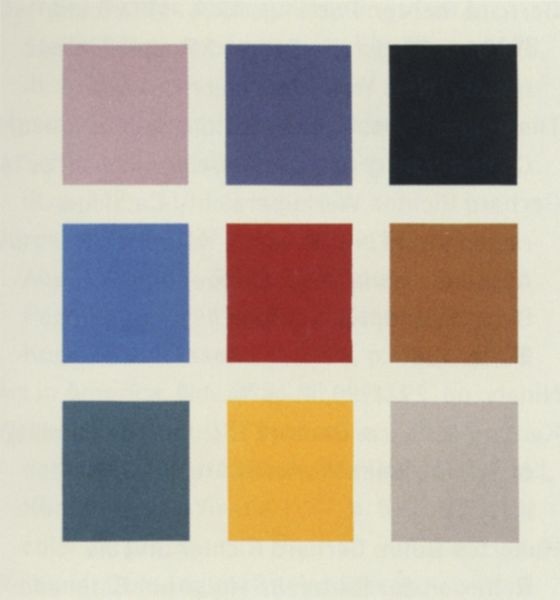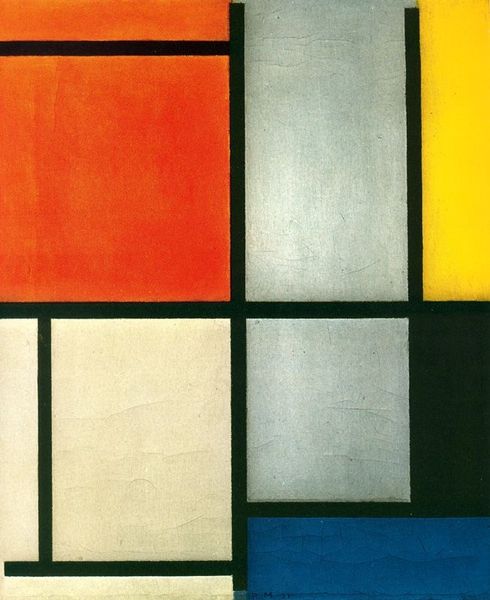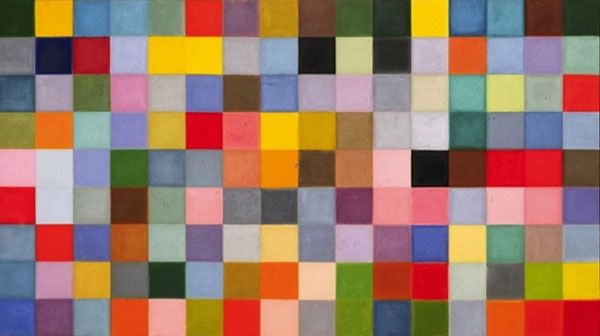
#
pattern
#
colour-field-painting
#
geometric pattern
#
geometric
#
geometric-abstraction
#
pop-art
#
line
#
pattern repetition
#
hard-edge-painting
Copyright: Jeremy Moon,Fair Use
Editor: We are looking at an Untitled piece by Jeremy Moon from 1968. It presents an arrangement of squares with distinct shades of orange, green, white, and brown, all neatly aligned within a vibrant, linear orange grid. At first glance, I’m struck by its rigid structure; it almost feels mathematical. How would you interpret this work through a formal lens? Curator: Note the calculated balance of warm and cool tones. How does that repetitive pattern engage or perhaps disengage the viewer? We see a careful interplay between figure and ground, with the orange grid both uniting and dividing the colored squares. Let's examine how Moon's careful composition impacts our perception of color. Editor: It's true, the grid is doing a lot of work. Does that impact how we think of the shapes? Curator: Absolutely. The color palette certainly evokes the era of Pop Art, but without the representational imagery often associated with the movement. Note that while some squares appear to advance visually, others recede, disrupting any sense of a static, uniform plane. Where would you locate its adherence to line in your analysis? Editor: I guess I hadn’t noticed the way those visual depths were playing off one another before. Do you think the seemingly simple line structure distracts from the individual color planes? Curator: Consider the very act of applying paint within defined boundaries. Where is its philosophical location? To understand Moon, we must look at its aesthetic arrangement devoid of social considerations or meaning. This is pure design at its most balanced. Editor: Thank you for this. It has taught me a lot about interpreting art strictly through the use of form and visual structure, helping me move beyond personal reflections. Curator: It's always enlightening to reconsider these artistic structures. The formal properties unlock an alternate and unique perception of the work of art, one without sentimentality, historical perspective, or subjective appreciation.
Comments
No comments
Be the first to comment and join the conversation on the ultimate creative platform.
